Saving 'Stumpy': How residents in Washington scramble to save this one cherry tree
WASHINGTON - The nation's capital is prematurely grieving over the expected loss of Stumpy, the city's favorite little cherry tree on the Tidal Basin.
But a plan to give the little tree new life by growing its clippings at the National Arboretum is giving new hope to Stumpy's devoted fan base, even those engaged in an online campaign to "save Stumpy."
For years, natives and visitors to the district, alike have marveled at the annual resurgence of Stumpy's blooms. True to name, Stumpy is not much more than a stump, but its size doesn't stop its small tangle of branches from bursting into bloom along with all the other cherry trees on the Tidal Basin as Washington takes in the beauty of its cherry blossoms every spring.
But news of a planned rehabilitation of the Tidal Basin threatened to spell the end of Stumpy's days. Last month, the National Park Service announced the project would require the uprooting of 158 cherry trees on the Tidal Basin and some banks of the Potomac River, Stumpy included. The park service said the removal, slated for the late spring or early summer, is required to defend the remaining cherry trees against aging infrastructure and rising sea levels, but that hasn't stopped Stumpy fans from rallying for its salvation.
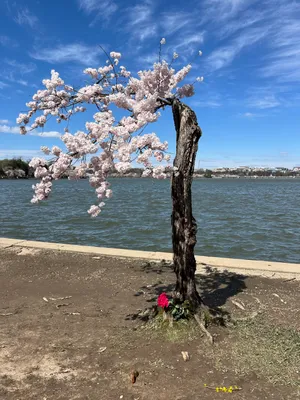
Hope for Stumpy's survival seemed dim. But a new collaboration between the National Arboretum in Washington, D.C., and the National Park Service to grow clones of Stumpy could allow the tree to live on in new form.
The plan will see horticulturalists plant clippings from Stumpy's living parts on the Arboretum's grounds. Eventually, the trees could be returned to the Tidal Basin and replanted.
Meanwhile, the original Stumpy, along with the other removed trees, will be mulched and returned to the National Mall, "providing root protection and enriching the soil for living trees for generations to come," according to National Park Service Chief of Communications Mike Litterst.
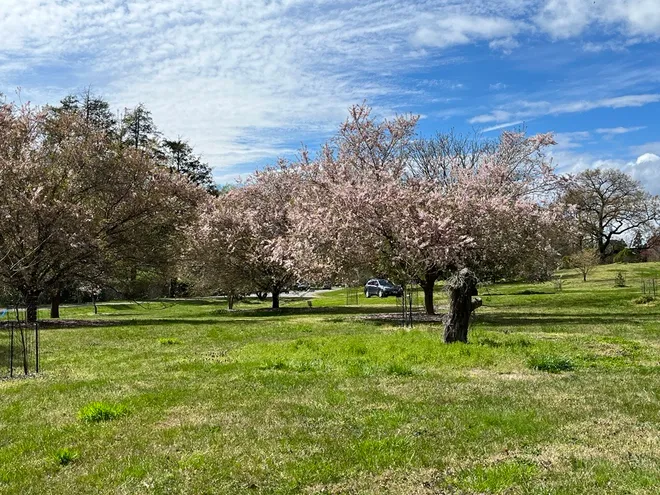
U.S. Arboretum hopes to grow Stumpy's genetic matches
Creating a genetic match of a tree is nothing new for the National Arboretum's horticulturalists. What doesn't come every day is the chance to work on "plant material that's achieved celebrity status," said Piper Zettel, a horticulturalist at the Arboretum.
Zettel said the park service reached out to the Arboretum last winter to share Stumpy's story and make a plan to preserve its legacy. "They knew, at that time, that transplanting was unlikely and maybe not feasible. And so that's why they came to us," she said.
The Arboretum's horticulturalists hope to preserve Stumpy's genetic material by collecting clippings from the little tree to be planted and grown on the Arboretum's grounds in a process called propagation. The new Stumpy will be grown in a propagation greenhouse, a special area with a controlled environment designed to help the new plants grow. If successful, in around a year, cuttings from the new growth would be transferred to their own individual pots to grow out.
"Ideally, in two to three years, we would hand them back to the National Park Service, provided that they were ready to receive them," Zettel said.
It's too early to say how many Stumpy clones will survive, but the Arboretum hopes to hand at least three healthy trees back to the park service, according to Zettel.
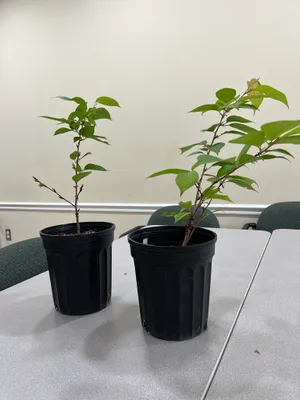
The Arboretum used the same process to preserve Stumpy's ancestors – horticulturalists planted clippings from the Tidal Basin's original cherry trees that were gifts of friendship from Japan in 1912. Those trees, which are now among the Arboretum's cherry tree collection, also serve to replenish the Tidal Basin's supply.
"While they offer great aesthetic value as flowering cherry trees, it's also a dual purpose in that we house them here as backups for the Tidal Basin," Zettel said. "So, in essence, we would hope to do the same with Stumpy."
Still, Stumpy isn't out of the woods yet – the success of the process partially depends on horticulturalists taking clippings during the optimal annual propagation window – for cherry trees, around mid-May to mid-June.
"The fact that Stumpy is so stumpy, and has like three scraggly branches, and may not put out that much new growth this spring, and even the new growth that it does put out might not be considered optimal... I mean, all these factors add up," Zettel said. "There's no guarantee."
Already, the Arboretum has heard from many concerned citizens in search of more information about what will happen to their beloved tree. "A lot of people have questions about why the project is happening, and how we might be involved," Zettel said. "There's been a big outcry from the public."
Zettel said the Arboretum does not take the care and keeping of Stumpy's genetic material lightly. "We're pretty honored to be able to not only participate, but we're offering an opportunity to continue Stumpy's story. So hopefully, this will be the next chapter."
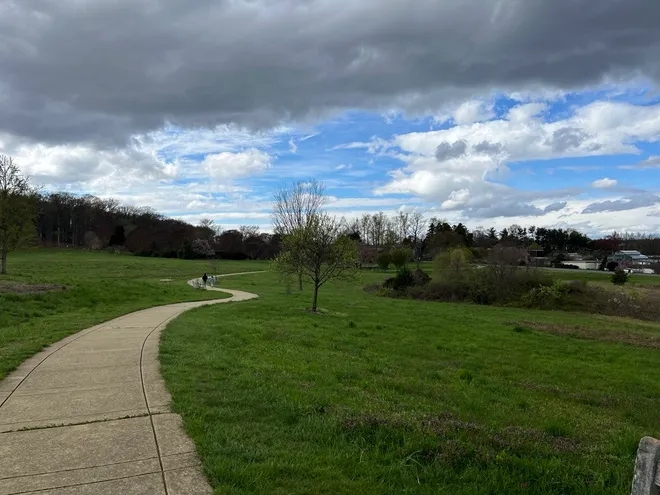
Petition calls for Stumpy's salvation
Amanda Rhodes, 31, is the author of a Change.org petition calling on authorities to "reconsider their decision to cut down 'Stumpy' – the cherished 'little tree that could.'"
"Within the community in D.C., this tree is so beloved. Every single person knows who Stumpy is," she said. "And not only have I gotten good feedback from the local people, I have had people share it across the country."
Rhodes, who lives nearby, has greeted Stumpy regularly for years during her morning walks before starting her work day as a clinical psychologist. "I can't do the walk without doing the Tidal Basin and saying hi to Stumpy," she said.
Over the years, the "steadfast and unwavering" little tree captured her heart. "If you look at Stumpy, it doesn't look like he's going to blossom at all. And yet every single year he has the most beautiful bloom."
When Rhodes learned of the tragic news, she immediately put out calls to the National Arboretum and the National Park Service, offering to fundraise towards Stumpy's replanting.
Although Rhodes was happy to learn of the plan to grow Stumpy's clones, she still pleaded with the National Arboretum to consider attempting to replant Stumpy, despite the little tree's fragile condition.
"If it's going to be anyone that's able to do it, it's them," she said. "We hope that they consider the possibility of attempting something like this, so that way we can continue on Stumpy's tradition in a way that allows us to go and visit him in his current state."
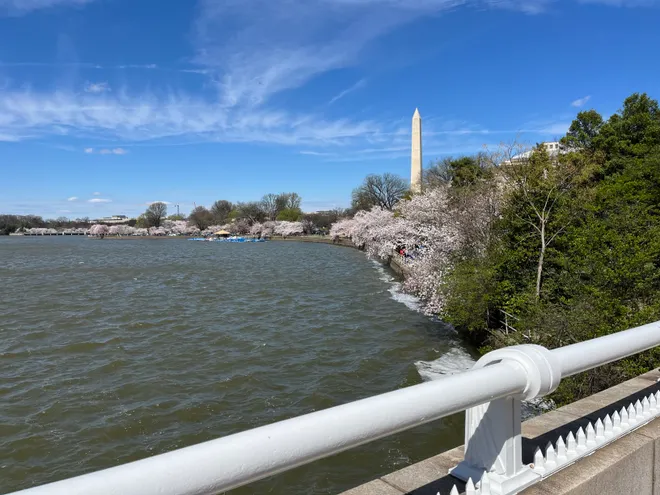
Watch:Yoshino cherry blossom trees reach peak bloom early in Washington D.C.
Experts say Stumpy's survival unlikely
Unfortunately, the science may not be on Stumpy's side.
Litterst said Stumpy's years of "twice-daily flooding" caused by the tides, as well as "sun scalding, compacted soil, and fungi," make it unlikely for Stumpy to survive any transplant.
"There's very little of the tree to even transplant. Almost all of the interior trunk is gone," he said. "It's really just the outer layer of bark and the tree branches that are left, so it's highly unlikely that it would survive the attempt to move it, much less transplant shock."
Scott Diffenderfer, a consulting arborist familiar with Stumpy's story, echoed Stumpy's poor condition.
"He's not a very healthy tree, unfortunately," said Diffenderfer, who is also a former town arborist for the town of Vienna, Virginia. "There's really not much they can do at this point."
It's evident from its appearance that Stumpy's environmental conditions have not been kind to the little tree, Diffenderfer said. The constant presence of large groups of people on the Tidal Basin, combined with rising temperatures, have taken their toll.
Although Stumpy manages to produce a few meager blossoms every spring, the small size of its canopy bodes ill for its future. "A tree like that only has, I would guess, less than 10% of its original canopy," said Diffenderfer. "The problem is, because there's a limited amount of canopy left on that tree, it's not going to be able to capture sunlight and transform that into nutrients in a very efficient and sufficient way. So each year, it's kind of in a little deficit."
Diffenderfer said that means Stumpy's death is likely inevitable, whether it is uprooted or not. "It's in what we term a decline cycle, or decline spiral," said Diffenderfer. "There's just a point in time where the tree just can't recover, essentially, and I think, at this point, that's where that particular tree is at."
"In reality, it would be pretty close to impossible to do anything to save that tree or elongate its life beyond a short term," he said. "Unfortunately, it's just in poor shape, poor condition."
More:Bradford pear trees are banned in a few states. More are looking to replace, eradicate them.
'He stands for beauty'
Cherry blossom lovers from around the world have stepped up to offer support for the Tidal Basin's trees ahead of the removal of some.
Thanks to Japan, the National Park Service may not need to wait until clones of Stumpy and other trees are fully grown to replant on the Tidal Basin. While on a visit to Washington last week, Japanese Prime Minister Fumio Kishida announced that Japan will gift 250 cherry trees as replacements, a nod to Japan's original cherry tree gift 112 years ago.
This year's cherry blossom season, which drew to a close in mid-April, saw Stumpy fans young and old celebrate the little tree's legacy.
At a recent racing event, runners were greeted by a person dressed as a Stumpy mascot, complete with a racing bib.
Visitors to the Tidal Basin stopped by to see Stumpy for a final goodbye, some leaving small bouquets or tokens in memoriam. Many paused to snap a picture, or jumped into the camera frame for a photo op with the famous tree.
"Stumpy fans are everywhere," said Debbie Scudder, 45, a Phoenix resident visiting Washington. Scudder said she promised a friend and fellow Stumpy lover in Pennsylvania she would send over a picture.
Many knew of Stumpy's removal, and came to the spot to get a last look. "When I came earlier, there were more blooms on him. He's looking a little sad," said Elyse Eenigenburg, 22, who moved to the area recently but had already seen "Save Stumpy" campaigns on social media.
Some Stumpy lovers had already come to terms with his imminent demise, like Kristin Hoeber, who pointed out the little tree to her three daughters, ages 10, 8, and 5.
"It's definitely kind of sad, so it's good to see it and have pictures. But it's definitely necessary, too," she said.
Paige Lawson, 29, who visited Washington on Easter break from law school from her hometown of Orlando was glad that Stumpy would help a new generation of cherry trees grow, even if it means he becomes a "sacrificial Stumpy lamb."

The important thing, she said, is preserving what it represents.
"He stands for beauty," she said. "No matter your stature or how you look or if you look a little different, you still represent beauty."
Cybele Mayes-Osterman is a breaking news reporter for USA Today. Reach her on email at cmayesosterman@usatoday.com. Follow her on X @CybeleMO.
Disclaimer: The copyright of this article belongs to the original author. Reposting this article is solely for the purpose of information dissemination and does not constitute any investment advice. If there is any infringement, please contact us immediately. We will make corrections or deletions as necessary. Thank you.






